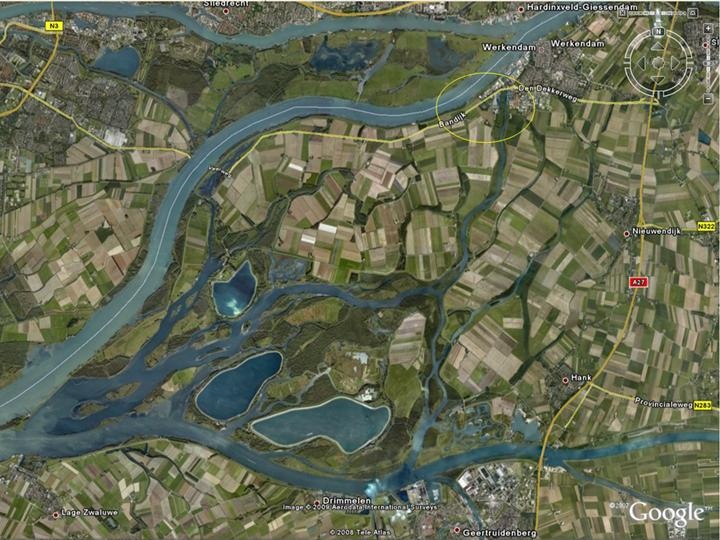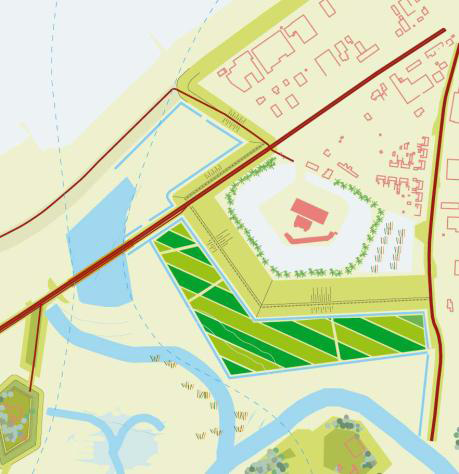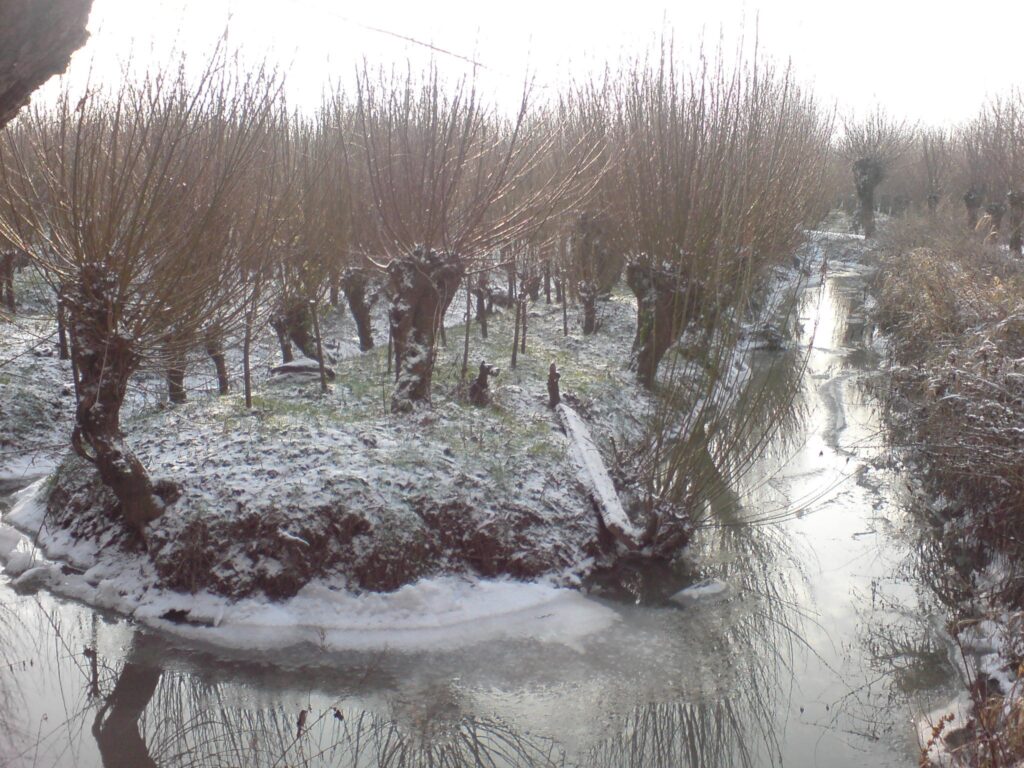Planning and design
A study has been executed by Deltares (Dekker and de Vries, 2009, in Dutch) in order to research the possibilities of planting vegetation to sufficiently reduce the incoming wave height in order to enable adaptation of the design of the dike. The target was to lower the height of the dike to 4,5 m +NAP. This could lead to a smaller footprint width of the dike of ± 15 to 20 meter. On the basis of qualitative assessment of effectiveness, possible impact on hydraulics and ease of maintenance, one design was selected, consisting of the willow forest bordering the planned new dike transect.
From field and laboratory research it has become clear that vegetation can be an effective means of wave reduction (see, for instance, Coops et al., 1996, Mendez and Losada, 2004, or Lovstedt et al., 2010). Koch et al. (2009) describe the role of natural systems in relation to ecosystem services such as providing safety through wave reduction. This property of vegetation is utilized in the design via a wave-reducing willow tree forest in front of the dike. This means that the dike can be lower than in a traditional design to prevent overtopping. Furthermore, a clay cover is sufficient to resist the remaining wave attack, which means there is no need for a concrete revetment.
In the final design a continuous willow tree plantation in front of the dike provides 80% reduction of incoming wave height under 1/2000 per year storm conditions. This allows the dike crest to be 0.7 m lower than in the traditional design, without violating maximum overtopping limitations. The willow plantation is inspired by the centuries old tradition of willow culture for the production of brushwood, which is typical of this region. Thanks to this know-how, tree vitality can be guaranteed and long-term maintenance of the plantation can be defined and budgeted.

Detailed design
The decision for implementation of a willow tree plantation is based on several conditions. First of all the vegetation has to be (quite) rigid in order to withstand the waves. Also the vegetation must be able to survive several inundations per year, each lasting relatively long (weeks). Moreover, the vegetation must be able to grow in soil with high groundwater levels. It is recommended that a mix of species (i.e. Salix alba and Salix viminalis) are used mainly because a mix decreases the risk of a disease or pest affecting the entire forest thereby decreasing forest health. The willow species selected meet all the conditions and fit very well into the landscape, as they are domestic in the area. The willow forest is located on top of a bank rising 0.7 m above the normal ground level, in order for the willows not to be inundated too frequently or too long. The width of willow field is about 60-80 m and the forest extends along the dike of Fort Steurgat. The planting grid will be staggered, with a density of approximately 4 tree stems per m2, resulting in hundreds of branches per m2.
The lay-out of the design is optimized so as to have the largest width in the zone of highest expected wave impact. The width is enough to allow two-yearly cutting of trees (each year half of the forest) without influencing the required safety level.


